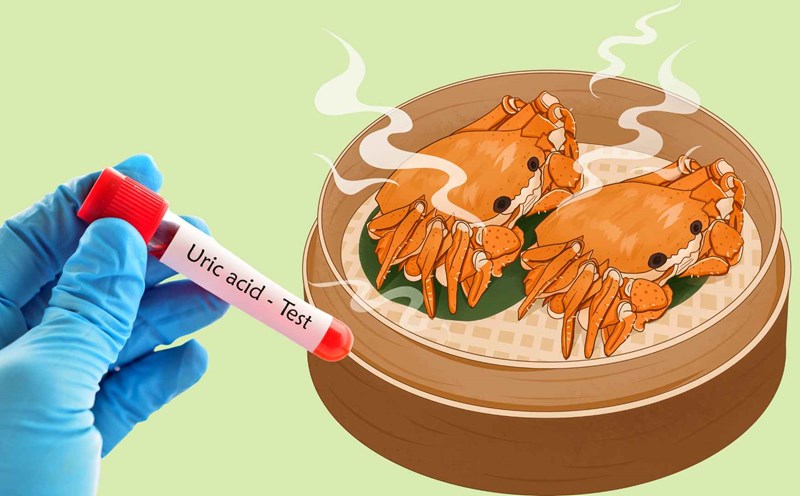Seafood is a rich source of protein, minerals and omega-3 that are beneficial for the heart. However, seafood contains a lot of purines - compounds that when broken down will form uric acid, causing the risk of gout outbreaks and metabolic disorders. Nutritionists recommend that people at high risk can still eat seafood if they follow some of the following principles.
First, choose seafood low in purines. Salmon, tuna, mackerel and shrimp are foods with lower purine content than clams, clams, crabs or herring. This is a safer choice for people who want to control uric acid.
Second, prepare properly. Limit fried foods high in oil or thick broth because it can increase the metabolic burden. Instead, prioritize boiled, steamed or grilled dishes with less spices to retain full nutrition and reduce the risk of increased uric acid.
Third, eat in moderation. According to the Mayo Clinic, adults should only eat seafood about 2-3 meals/week, each meal 100120g. Eating too much at one time can easily cause uric acid levels in the blood to spike.
In addition, drinking enough water is also an important factor. Water helps excrete uric acid through urine, reducing the risk of crystallization into stones or causing gout arthritis. People who regularly eat seafood should drink at least 2 liters of water per day.
In addition, combining seafood with green vegetables and fruits rich in vitamin C such as oranges, lemons, and strawberries will support the metabolism process, limiting the stagnation of uric acid.
Experts emphasize that seafood is not a "nd waged" food for people at risk of gout. The important thing is to know how to choose the right type, eat in moderation and maintain a healthy lifestyle. Thus, you can completely enjoy the fresh flavor of the sea while still protecting your long-term health.










